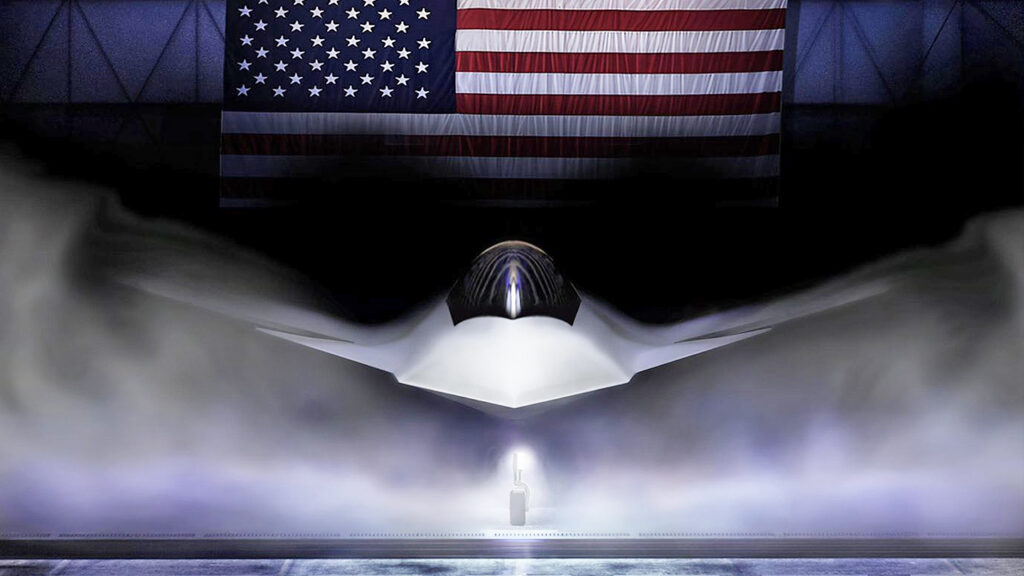Why China’s new J-35 jet could mean trouble for America
- By Alex Hollings
Share This Article

China’s J-35 and the J-20 5th generation stealth fighters may not be as stealthy or as technologically advanced as their American counterparts, but the realities of air combat mean they don’t have to be.
The level of technology you bring to bear is only one of many variables that shape a conflict, and as history has repeatedly proven, a high level of training, effective combat strategy, overwhelming production capacity, and even luck can all play a role in offsetting or overcoming a technological disadvantage on the battlefield.
We need to stop thinking of airborne engagements in terms of “who would win between one F-22 and one J-20” and instead, think in terms of “who would win between groups of hundreds of different combat aircraft operating in concert with one another to bring different capabilities to bear.”
How the J-35 would fare in a fight with an American F-35 is less important than how it could enable China to advance its strategic objectives in the Pacific through an increase in low-observable airpower that can scramble from well beyond Chinese shores. Engagements with other 5th-generation fighters, like the F-35, are entirely possible – even likely – but so are engagements against less capable 4th-generation platforms like the F/A-18 Super Hornet or the F-16 Fighting Falcon; engagements in which the J-35 would have a distinct advantage.
Most pressing of all could be the J-35’s likely inclusion in China’s rapidly maturing long-range detection and targeting apparatus. China can use the aircraft’s onboard sensors as yet another node in a broader system meant to guide long-range anti-ship weapons like the hypersonic DF-ZF into encroaching American aircraft carriers. If the J-35 is sufficiently low-observable, it could play a pivotal role in locating and relaying target coordinates that could ultimately bring down a carrier… all without ever firing a shot.
Related: What do the recent Russo-Chinese joint exercises in the Pacific mean

In a broader geopolitical sense, the J-35 also likely represents the end of America’s monopoly in exporting 5th-generation fighters – Pakistan and Egypt have already expressed interest in buying the jet. While Russia’s export-oriented Su-75 Checkmate may have ultimately proven to be little more than a plywood mockup of vaporware, the J-35 already has a solid decade’s worth of testing behind it and is being fielded by a nation that has demonstrated its ability to build low-observable airframes in volume. The advanced avionics making their way into its fuselage likewise benefit from testing and maturation in other platforms, making for an aircraft that’s likely to very quickly perform at a high level compared to other Chinese fighters.
Further, despite technology theft, it’s equally important to recognize and acknowledge the rapid progress China has made in several areas vital to advanced aircraft design. China has invested in the production infrastructure required to produce these aircraft and in the academic infrastructure needed to continue producing scientists and engineers who can push technological boundaries even further. Where China was once a nation with such limited design capabilities that it was forced to steal designs or purchase entire production lines from the Soviet Union to field its own fighters, it has now eclipsed Russia as a global leader in aviation, and will soon join the United States as one of the only nations on earth with more than one stealth aircraft in service.
In a future fight over the Pacific, the J-35’s smaller size and lower production costs could allow for fielding these fighters in greater numbers than the J-20, increasing the number of stealth threats American military planners have to contend with, and on a long enough timeline, China’s J-35 exports could likewise grant it more geopolitical influence over countries hoping to place orders.
Nevertheless, the J-35 is not in service yet, and will likely take years to get there. Despite being in development for more than a decade already, this is still a very new fighter program – and new programs don’t always go smoothly.
Overall, the J-35 isn’t as capable or as advanced as the F-35, not as air-to-air dominant as the F-22, and not as mature as its J-20 partner. Yet, it is a sign of China’s rapid progress in the field of military aviation technology, its continued commitment to closing the gap between American and Chinese airpower, and an opportunity to increase its diplomatic clout.
Feature Image: Prototype naval version of China’s Shenyang J-35 stealth fighter. (Warzone/Wikimedia Commons)
Read more from Sandboxx News
- The French once put a cannon on a Vespa and sent it to war
- Is Elon Musk right saying that fighter jets have become obsolete?
- Marines deploy new system to take out ships in the Pacific
- How does China’s new J-35 stealth fighter compare to America’s F-35?
- Who dares wins: The importance of defeat in being successful
Related Posts
Sandboxx News Merch
-

A-10 ‘Thunderbolt Power’ Poster
$22.00 – $28.00 Select options This product has multiple variants. The options may be chosen on the product page -

A-10 ‘Warthog’ Poster
$22.00 – $28.00 Select options This product has multiple variants. The options may be chosen on the product page -

F-35 ‘Lightning’ Poster
$22.00 – $28.00 Select options This product has multiple variants. The options may be chosen on the product page

Alex Hollings
Alex Hollings is a writer, dad, and Marine veteran.
Related to: Military Affairs

The AGM-181 LRSO missile will modernize America’s nuclear triad

Navy will soon announce the contract award for its F/A-XX 6th-generation jet, according to reports

America’s new air-to-air missile is a drone’s worst nightmare

What we can deduce about the Boeing F-47 and its capabilities so far
Sandboxx News
-

‘Sandboxx News’ Trucker Cap
$27.00 Select options This product has multiple variants. The options may be chosen on the product page -

‘AirPower’ Classic Hoodie
$46.00 – $48.00 Select options This product has multiple variants. The options may be chosen on the product page -

‘AirPower’ Golf Rope Hat
$31.00 Select options This product has multiple variants. The options may be chosen on the product page -

‘Sandboxx News’ Dad Hat
$27.00 Select options This product has multiple variants. The options may be chosen on the product page
